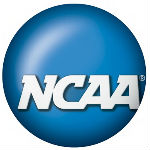 Quietly waiting out the rumble taking place up in Oakland, a couple of the most powerful figures in American Collegiate Sports had a few thoughts of their own about the future of the NCAA and the possible ramifications from the O’Bannon case.
Quietly waiting out the rumble taking place up in Oakland, a couple of the most powerful figures in American Collegiate Sports had a few thoughts of their own about the future of the NCAA and the possible ramifications from the O’Bannon case.
Mike Slive was there from the SEC along with Big 10 Commissioner Jim Delany and you can just imagine what they were discussing behind closed doors. Of course the reporters were there with their endless speculations on almost every aspect of the state of college sports in this country. Everyone already knows that a change is in the air.
Perhaps simply to squash the guessing, Mr. Slive and Mr. Delany did make themselves available for questions and quite an interesting discussion it was, indeed. Mike Slive opened by asking the reporters, “Do you need anything from us?” Sort of like asking a shark if he’s hungry!
But these guys are both known to be gentlemen and the press had its 20 minutes with two of the most influential figures in American sports today. The interviews took place in a quiet hallway of the Ritz-Carlton Hotel at exclusive Dana Point in Southern California.
Delany is 66 years old and Mike Slive is 73. They are not going to give up on the existing NCAA model that they have lived with all their lives so easily. Both know that there are some changes that will have to be made, but the basic plan should remain intact. Both are devoted to excellence in collegiate athletics and scholarship.
Delany, who attended the University of North Carolina on a $213 scholarship that only covered his tuition, said, “I believe that college athletics is revered and positive, an American institution”, then Mike Slive added, “Part of our DNA as a culture”.
Delany then went right to the point, “What has really changed is the fact that head coaches are more successful. Did that change the relationship between the athlete and the school?” Now there’s something to think about.
Back when most of us went to school it wasn’t such a big deal. But Slive and Delany now oversee what amounts to enterprises with a combined income of $630 million per year. Is it all that unrealistic to expect some of that great wealth to trickle down to the boys and girls out there on the field playing their hearts out for the University and risking injury, just a little at least?




